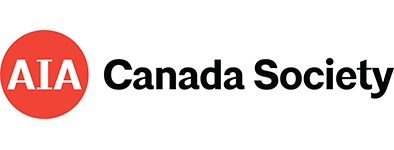Join the AIA International Global Mentorship Program – Update July 10, 2024
Are you a Mentor or Mentee? Invest in yourself and the growth of the profession while gaining skills needed in the profession today, learn leadership strategies, and how to navigate the architecture industry.
Register for the Global Mentorship Program as we pair students, recent graduates and those pursuing licensure with seasoned architects for a collaborative exchange. We host large group meetings focused on professional development topics while making positive connections across continents.
- 9-month long program
- Quarterly and monthly large and small group settings
- Open to students, recent graduates, those pursuing licensure and architects
- Cross continental networking opportunities
- Gain professional development, learn leadership strategies, and learn how to enhance workplace culture in this global profession
AIA International Mentorship Program Registration: Mentors & Mentees
Any questions, email Michelle Montgomery at emergingprofessionals@aiainternational.org.
UPDATE | July 10, 2024
June session recording: (will be posted for viewing only for one month for informational fidelity)https://drive.google.com/file/d/1ZJNX2GesyUD-kD5nglOOg-90TgB-4fDZ/view?usp=sharing
Our July session is upcoming, we look forward to welcoming Danielle Gray from SMPS – 31 July at 8am EST. She will present “How To Accelerate Your Content Development Process With AI Tools”. It will be a discussion around marketing, business development and how to use AI tools to further your efforts in those areas.
July Session link: https://us02web.zoom.us/j/85383460456?pwd=k62yZIzaEMGlcq67OH9ulUrVT5tMv5.1
We are preparing in advance for the November speaker series, “How to present yourself”. It is a two part series. One panel discussion with hiring professionals and project leaders to discuss what they look for in a job candidate and how best to approach the CV / Portfolio documents preparation and what to expect from the Interview process. The second will be a nuts and bolts review of writing a CV, cover letter and goals statement and how to tailor them to a job advertisement.
November Session: For feedback on your CV / Portfolio documents, send them to me directly for review and discussion. They will be shared anonymously in the session as an example, and feedback will be provided by the speakers. A great way to gather first-hand knowledge on how to improve. Send to emergingprofessionals@aiainternational.org
Notes from the NCARB Session on 6/26/2024:
Note: Always refer to the NCARB.org website for the most up to date information.
- NCARB’s Role:
https://www.ncarb.org/about/ncarbs-role
The National Council of Architectural Registration Boards (NCARB) is a nonprofit organization made up of the architectural licensing boards of 55 U.S. states and territories. While each jurisdiction is responsible for regulating the practice of architecture within its borders, NCARB develops and administers national programs for candidates pursuing architectural licensure and helps architects expand their professional reach through the NCARB Certificate. - Licensure Basics: https://www.ncarb.org/get-licensed/licensure-basics
- Supporting Architecture Organizations: https://www.ncarb.org/blog/a-guide-to-architecture-organizations
- The NCARB Certificate: https://www.ncarb.org/advance-your-career/ncarb-certificate
Having an NCARB Certificate gives you the flexibility to apply for reciprocal licensure in all 55 U.S. jurisdictions. The Certificate can also be used to support registration in Canada, Mexico, Australia, and New Zealand. - Education Alternative to Certification:
https://www.ncarb.org/advance-your-career/ncarb-certificate/get-certified/education-alternative
Architects who hold a license from a U.S. jurisdiction but have not received a degree from a program accredited by the National Architectural Accrediting Board (NAAB) can pursue an NCARB Certificate through the Education Alternative. - Education Alternative: Two Times AXP https://www.ncarb.org/ncarb-certificate/benefits/get-certified/education-alternative-2-times-axp
- Education Alternative: Certificate Portfolio:
https://www.ncarb.org/ncarb-certificate/benefits/get-certified/education-alternative-certificate-portfolio
U.S. architects without a degree from a program accredited by the National Architectural Accrediting Board (NAAB) can pursue an NCARB Certificate through one of two “Education Alternative” options. - Internationally Educated (EESA):
https://www.ncarb.org/become-architect/earn-license/foreign-applicants
https://www.ncarb.org/what-is-eesa-evaluation
Foreign-educated licensure candidates without a degree from a program accredited by the National Architectural Accrediting Board (NAAB), can have their education assessed through a program called Education Evaluation Services for Architects (EESA).
Administered by the NAAB, an EESA evaluation compares your academic transcript(s) to the NCARB Education Standard. The evaluation determines whether your education meets the standards for initial licensure, NCARB certification or reciprocal licensure, and identifies any deficiencies that must be addressed.
- Internationally Licensed: https://www.ncarb.org/advance-your-career/ncarb-certificate/get-certified/foreign-architects
If you are licensed as an architect outside of the United States or Canada, you may be able to pursue an NCARB Certificate by verifying your license and completing two programs required for licensure in the United States: the Architectural Experience Program (AXP) and the Architect Registration Examination (ARE). After earning a Certificate, you can use your Certificate to apply for a license in a U.S. jurisdiction. - Qualifying for the Foreign Architect Path
To be eligible for this path, your foreign architecture license must meet certain requirements.
1.Your license must be currently active, and remain active until you receive your NCARB Certificate
2.Your license must allow unlimited practice—the design of all types and sizes of buildings
3.Your country must have a system for tracking disciplinary action for architects
4.You must have no record of disciplinary action
- FA Documentation checklist for the program: https://www.ncarb.org/sites/default/files/Main%20Website/Data%20%26%20Resources/Forms/Foreign%20Architect%20Path%20Documentation%20Checklist.pdf
- Mutual Reciprocity Arrangements: Through NCARB’s established agreements, Certificate holders can pursue reciprocal licensure in the following countries:
· Australia and New Zealand
· Canada
· Mexico
· United Kingdom
- Licensing Requirements Tool: https://www.ncarb.org/get-licensed/licensing-requirements-tool
With the link above, you’ll find each jurisdiction’s requirements as reported. Keep in mind rules and requirements may change at any time, so check with your jurisdiction for the most updated information. - Foreign Architect Manual: https://www.ncarb.org/sites/default/files/Foreign-Architect-Manual_0.pdf
- Establish NCARB Record: https://www.ncarb.org/gain-axp-experience/start-axp/establishing-your-ncarb-record
Keep in mind you do not need to establish your NCARB Record until you are ready to begin reporting your experience.
Your NCARB Record is a detailed, verified account of your education, experience, and examination history. You’ll need a Record to report AXP experience, start the ARE, earn your initial license, and apply for an NCARB Certificate. - NCARB Fees: https://www.ncarb.org/fees
Application fee for licensure candidates: $100
Covers your initial application for an NCARB Record, maintains your active Record for one year, and includes one free Record transmittal to support your application for initial registration.
Annual renewal fee for licensure candidates: $85 - NAAB:
https://www.naab.org/architecture-programs/school-search/
The National Architectural Accrediting Board (NAAB) is an agency that evaluates architecture programs in the United States to ensure that graduates have the technical and critical thinking skills required to have a rewarding career in the profession. The NAAB’s accreditation is independent of the school’s overall accreditation. - The Canberra Accord: The Canberra Accord recognizes the substantial equivalency of accreditation / validation systems in architectural education. https://canberraaccord.org/
- NAAB International Certification: https://www.naab.org/international-certification/icert-overview
- AXP: https://www.ncarb.org/gain-axp-experience/start-axp
The AXP® is designed to help you gain comprehensive experience in areas of architectural practice related to health, safety, and welfare. You can start earning AXP experience after you graduate from high school or the established equivalent. - AXP Guidelines: https://www.ncarb.org/sites/default/files/AXP-Guidelines.pdf
Mostly everything covered regarding AXP can be found in the guidelines. The document is an easy read filled with hyperlinks, so anything relevant to you is easily accessible. - Prepare for ARE 5.0:
https://www.ncarb.org/pass-the-are/prepare
With this link, you’ll be able to access the ARE 5.0 Guidelines, Handbook, Divisions, Community, Demonstration Exam, & Test Prep Video Series. - Free Practice Exam:
NCARB has created free ARE 5.0 practice exams to provide all candidates with access to affordable, high-quality materials to prepare for the ARE. The fully scored, full-length exams include one version of each division of the ARE and are available in the “Exams” tab of your NCARB Record. Just click on the Practice Exam Dashboard link near the bottom of your Exams tab.
- Free ARE 5.0 Practice Exams:
https://www.ncarb.org/pass-the-are/prepare/practice-exams
Demonstration Exam & Testing Strategies: https://www.ncarb.org/blog/are-50-demo-and-testing-strategies - Testing with PSI:
https://www.ncarb.org/pass-the-are/start/testing-psi - Online Testing Process
The online testing process starts by scheduling an exam and choosing the online-proctored option, which of course allows you to take the ARE from home. Before taking an online-proctored exam, please familiarize yourself with NCARB requirements and the requirements of our test vendor partner, PSI. In short, you will need to test in an organized, private space without disruptions or distractions, including from other people or pets. You will also need to ensure that your computer setup meets testing requirements, including the use of an external webcam with autofocus.
- Online Proctoring:
https://www.ncarb.org/pass-the-are/online-proctoring
Blog: Online Proctoring: How to Set Up Your Testing Space: https://www.ncarb.org/blog/online-proctoring-how-to-set-your-testing-space - ESL/ADA Accommodation:
https://www.ncarb.org/pass-the-are/start/requesting-exam-accommodations - ARE 5.0 Guidelines:
https://www.ncarb.org/sites/default/files/ARE-5-Guidelines.pdf
Everything you will need to answer questions on the ARE will be provided in the exam delivery software, including a calculator, digital whiteboard, and resources, which include some information from the IBC, as well as structural calculation formulas and more. If an excerpt from the IBC or other resource is needed to answer the question correctly, it will be provided as an exhibit or other resource embedded in the question.




